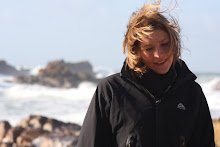In a world before fridge/freezers how did you store your
food? Peasants used salt and created 365
recipes for salted cod fish, but royalty used ice. Ice houses were built in locations around
Portugal and snow compacted within them to form large blocks of ice. This ice was then transported by donkey or
cows to the river, then onwards to the royal family.
Santo António da Neve in the hills above us was one of the places famous for ice, ‘Neveiros’ the snow farmers (so to speak) worked all year to cool the food of the high born.
The ice blocks made a slow journey from the top of the
mountain down the donkey tracks to the river.
How the ice didn’t melt in the heat of the day is beyond me.
There are still hundreds of ancient tracks in the
mountains here and I recently walked one to take a donkey to his new home.
Friends of ours rescued an old female donkey last year and
have been searching for a stable mate for her. They finally found one on the
other side of the mountain. What do
you do when you need to move a donkey from one location to another and you have
no animal transport truck to move them?
Well, you walk of course!
Xisto (or Mr Xisto or my name for him ‘monkey donkey’) was
being handed over from his old owners to our friends in July.
We met them on top of the mountain to do the
formal hand over. Mr Xisto had already
been walked miles from his home to the top of the mountain, rested overnight he
had the other half of the walk to complete.
My friend Ingrid and I decided to join Mr Xisto and his new owner for
part of that walk.
It wasn’t easy, the quickest way down the mountain is also
the steepest! Mr Xisto was not happy as
he picked his way down the narrow track.
It was hot too, water stops were much needed. But donkeys are such amazing trusting
animals. He followed our lead and Ingrid
did a super job or propping him up when he needed her to lean on.
We walked for two hours, met a group of
goats, sling shot some stones at some very nasty dogs and learned that Mr Xisto
stops when there are hornets having a go at his flanks.
We felt like we were walking in the tracks of the ‘Neveiros’ – the romantic image of
walking in the shadow of the ancestors of Portugal, with a donkey in the
afternoon heat sustained our sense of humour.
I am sure these ancient tracks are long gone, but the sentiment was
there.
Instead of stopping after two hours we carried on and on, and took
Mr Xisto almost all the way home. But
with the light fading and feet hurting and backs aching we decided to call it a day and his
owners camped overnight on the mountain top.
Mr Xisto and his owners got up at dawn the next morning and walked the
last part of the journey to his new home.
Mr Xisto is settling in his new home with his stable mate
very well.









Wonderful read!
ReplyDelete